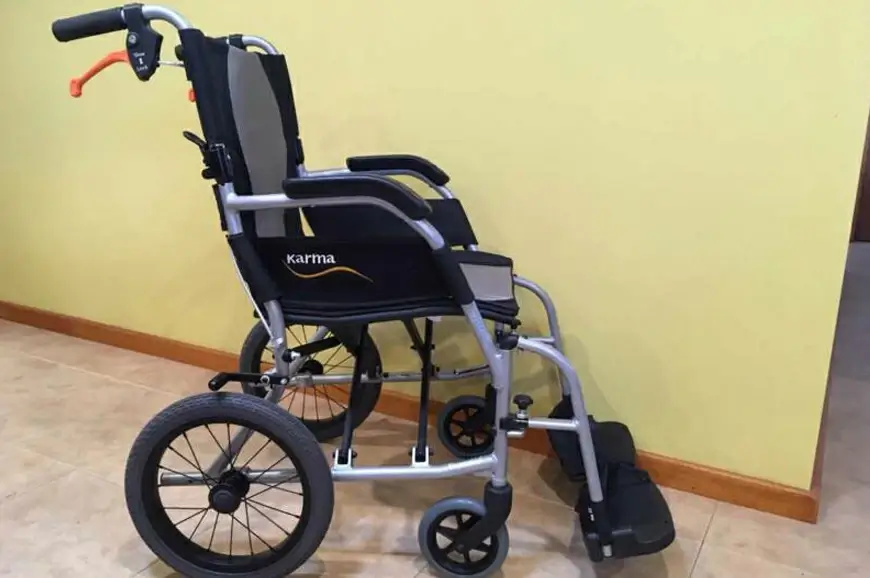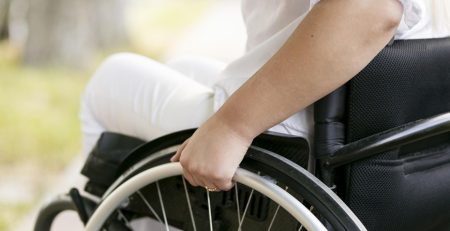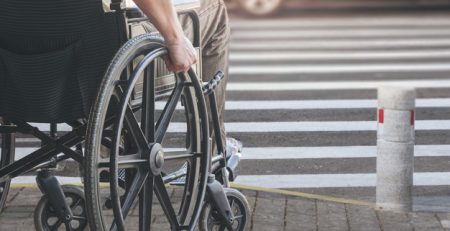- No products in the cart.
Benefits of adaptive equipment for those with disabilities
People may be reluctant to use any type of tool to get around their environment or to help them do what they were once able to do on their own. This can be for a variety of reasons: perhaps they have a misunderstanding about the device and what it does or possibly it is out of fear they won’t know how to navigate the device when they need it most. Some people may be hesitant to admit they need assistance and aren’t as independent as they once were, and others may outright decline any type of tool because they believe it is not available to them, either locally or financially.
Whatever the reason is for someone turning down the use of adaptive equipment, it is important to set the record straight about the ways that adaptive tools can benefit individuals with disabilities, seniors, and even those recovering from a short-term injury. Take a look at all the advantages to adaptive equipment, ranging from wheelchairs to walkers to rollators and much more.
It enhances your safety.
This is one of the most common and important ways that adaptive equipment helps those with disabilities. Just ask any therapist why they recommend devices and they will most likely tell you, “Because it keeps my patients safe, prevents falls, and keeps them alive for much longer.” This is not only the cornerstone of patient care, but also the central reason that family members seek adaptive equipment for their loved ones — everyone is aiming to protect those they love.
It helps you do what you love.
Another huge reason that people seek assistance from adaptive equipment is because it allows them to fully engage (or re-engage) in some of the activities they most love. Possibly you love fishing but your fear of falling has prevented you from getting back out on the water. Now you can with the reassurance and assistance of a cane or easily-transported rollator. Some people may use splints and braces to regain function of their hands, which may allow them to sew, color, write letters, and manage their finances. Individuals with vision impairments may benefit from new glasses, magnifiers, bright lamps, and page enlargers so they can read, watch TV, spend time enjoying nature, and more. Those who are hard of hearing may rely on hearing aids or cochlear implants to allow them to listen to music and fully interact with others socially, either in-person or on the phone. As you can see, there are many ways that high- and low-tech adaptive equipment can improve someone’s quality of life and help them resume what they most love doing.
It improves their mood.
People who struggle with certain fundamental activities like walking, reading, carrying objects, and grocery shopping, may experience a range of emotions in response to their change in abilities. Individuals struggling with an illness or disability may express (or internalize) feelings of helplessness, hopelessness, frustration, denial, memory changes, fear, anger, sadness, and much more. By getting connected with tools to help manage their days and all they may encounter during this time, individuals can work through these emotions or may even discover that they go away due to the restoration of their independence.
It encourages socialization.
Unmanaged disabilities can really take the forefront in someone’s life. This can cause them to isolate from others, act differently than they usually would, and withdraw from their typical leisure and recreational activities. While this is not ideal behavior for anyone, it is especially concerning for those living with disabilities, as they are at a much greater risk for experiencing mental health concerns such as anxiety, depression, suicidality, and self-harm. With tools to transform their capabilities and levels of engagement, individuals with disabilities can utilize adaptive equipment to re-enter social situations, regain their confidence, and feel more relaxed during situations that may previously have caused them to worry or feel tense.
It prevents any neglect of personal responsibilities.
It is not uncommon for some individuals — especially those who already experience symptoms of anxiety and depression — to simply avoid certain activities that they are no longer able to do. While this may not be overtly harmful in some cases, such as if the activities are leisure or recreational in nature, it can be a major personal safety concern in other instances. If basic self-care tasks such as grooming, bathing, and toileting are entirely neglected, individuals are at risk of being placed in the care of someone else who can properly tend to their needs. In order to successfully live on their own, individuals with disabilities need sufficient support in place. This can include caregivers, live-in aides, remote monitoring systems, or – in some cases – adaptive equipment that can allow them to successfully manage these responsibilities.
It offers a sense of competence and accomplishment.
There is a basic sense of reward that comes from doing something on your own. This reward partially comes from being able to see the fruits of your labor, for example, by knitting something without external assistance or the use of a pattern. But a large component of this motivating feeling lies within our brains. When we do something that makes us feel accomplished and independent, the brain triggers a natural release of hormones that cause us to feel happy, energized, motivated, and fulfilled. This not only serves as an incentive for us to continue doing these activities we love and are good at, but it also maintains our long-term independence because we will seek out ways to continue feeling that same way.
As you can see, there are many benefits to using adaptive equipment, but there is no one device that is best for all health conditions, ages, and personal circumstances. It is important to speak with a healthcare professional or mobility consultant to learn what tools are available to you and how you can incorporate them into your daily routines.















